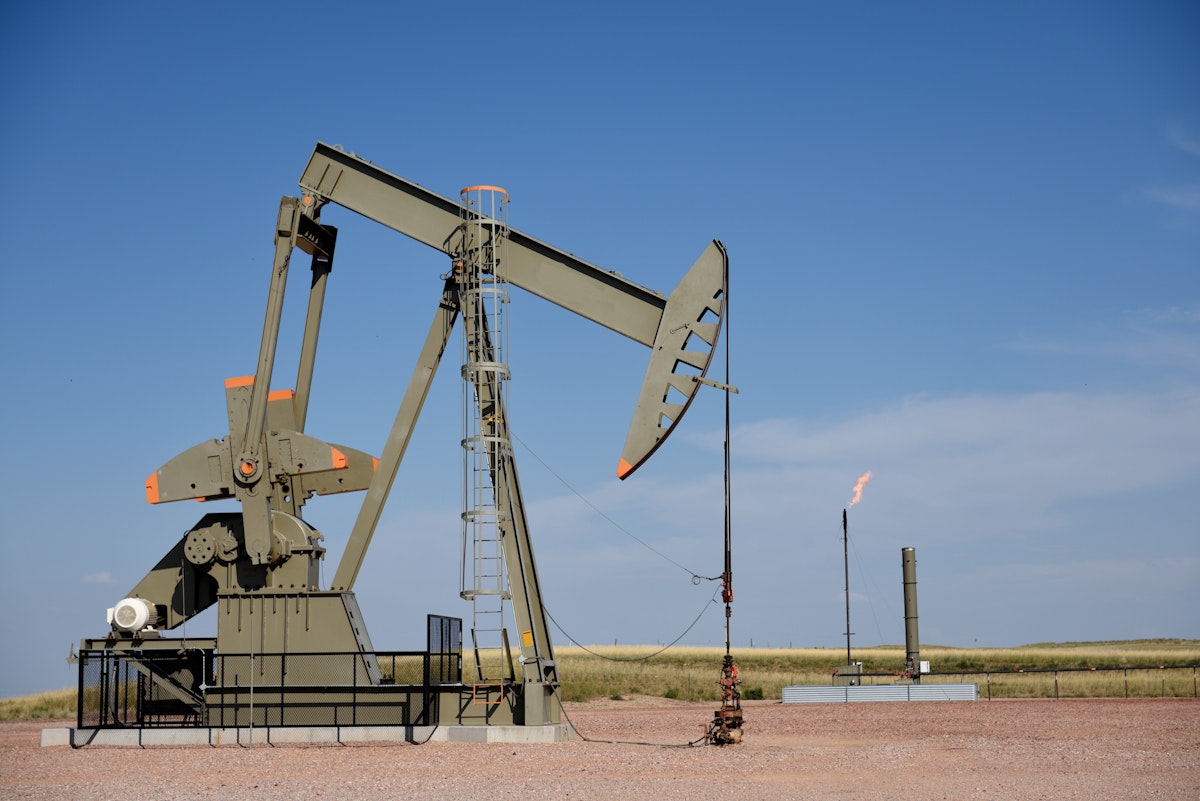The Gas Bridge Revisited
Even Leaky Gas is Better Than Coal

-
-
Share
-
Share via Twitter -
Share via Facebook -
Share via Email
-
In a new Nature paper, Evan D. Sherwin and his co-authors report fugitive methane emission rates from US oil and gas production between 2.79 and 3.14 percent, “or roughly three times the national government inventory estimate.” The study’s roughly one million aerial measurements, or 52 percent of US on-shore oil and 29 percent of US natural gas production, is a major advance and compliments other recently published studies elucidating higher than previously estimated methane leakage rates from the oil and gas sector.
These latest estimates have led many observers to re-up longstanding claims that fugitive methane emissions significantly erode, or even completely erase, the aggregate emissions benefit of burning natural gas as a substitute for coal in power plants. As Climate Changemakers asserts, “the natural gas supply chain can actually negate the environmental benefits of using natural gas over coal.” Climate activist Assaad Razzouk, attempting to summarize the paper on Twitter, wrote “More data that fossil gas (greenwashing name: natural gas) is dirtier than coal,” an argument other activists like Bill McKibben and Mark Ruffalo have made for years.
But this both misunderstands the science of coal versus gas emissions in the power sector, and misinterprets the findings of the new fugitive methane paper. Not to mention, unlike coal power, natural gas power generation will increasingly be used as a flexible resource instead of strictly as a baseload provider.
Methane, as readers may know, is the main component of natural gas. When combusted in a power plant, methane releases carbon dioxide, water, and energy, which is converted into electricity. But the carbon emissions released from natural gas combustion are about half the emissions released when coal is combusted for power generation. As a result, natural gas is widely understood to reduce emissions when displacing coal-fired generation. Since 2005, the coal-to-gas transition in the United States has been responsible for roughly two-thirds of the decrease in power sector CO2 emissions through 2019 and a third of overall carbon emission reductions through 2016.
On its own, though, methane is a more powerful greenhouse gas than carbon dioxide. On a 20-year time horizon, methane has a global warming potential (Table 8.7, pg. 714) 86 times that of CO2, which drops to 34 times for a centennial outlook. Atmospheric methane has a lifetime of 7-12 years and eventually reacts with ozone to form CO2 and water. In this way, methane is a potent short term greenhouse gas but far shorter-acting than CO2, which has a lifetime on the order of centuries.
Because of its much shorter atmospheric residence, natural gas still tends to reduce warming substantially when it substitutes for coal. As climate scientist, and our former colleague, Zeke Hausfather showed in a 2015 paper in Energy Policy, high fugitive methane emissions in the natural gas system can lead to a “pulse” of extra atmospheric warming over the short term when substituting for the same amount of electricity from coal. But over the long term, as methane decays into carbon dioxide and water in the atmosphere, the warming effect of natural gas emissions drops precipitously, even under high leakage scenarios.

As Hausfather found, the leakage rate does not significantly affect the reduction in warming through the end of the century when gas displaces coal.
Much of the media and activist misunderstanding and miscommunication comes from the near ubiquitous misinterpretation of a 2012 study in the Proceedings of the National Academies of Sciences (PNAS) and similar analyses that followed. In the study, Alvarez and colleagues calculate the time-dependent methane leakage rate threshold, at which point the radiative forcing or warming potential of natural gas and coal-fired electricity generation are at parity. The commonly cited threshold figure is 3.2 percent leakage, beyond which natural gas would supposedly have a higher warming impact than coal. However, this threshold value is at time equal to zero. In other words, it does not consider that the global warming potential of methane declines over time, an obviously inappropriate comparison since the analysis itself is time-dependent and global warming is a phenomenon that occurs over the long term. The equivalent tradeoff point rises to nearly 4 percent at 20 years, 5 percent at 40 years, and 6 percent at 60 years. As the authors themselves conclude, “using natural gas instead of coal for electric power plants can reduce radiative forcing immediately, and reducing CH4 losses from the production and transportation of natural gas would produce even greater benefits.”
Similar to the independent work of Alvarez et al. in PNAS and Ladage et al. in Nature Scientific Reports, Hausfather’s research clearly shows that the comparative warming advantage of gas versus coal is less dependent on methane leakage rates as the time horizon increases.

This all suggests that, taking into account the methane leakage rates reported in the new Nature paper, natural gas plants are at risk of increasing global warming over the short term compared to coal plants (though not over the long term).
But even this overstates the case, since the high fugitive methane rates observed by the Nature paper authors occur mostly in oil-producing regions, while fugitive methane rates in gas-rich regions are markedly lower.
The paper finds a leakage rate of around 0.75% for Pennsylvania's high-productivity gas-rich Appalachian basin, compared with a 9.63% leakage rate for the predominantly oil-producing Permian Basin. High leakage in oil production is well-documented, especially for producers in the Permian Basin, where “high methane leakage… is likely contributed by extensive venting and flaring, resulting from insufficient infrastructure to process and transport natural gas.” In other words, the leakage rates for natural gas production, specifically in productive regions with sufficient infrastructure, such as the Appalachian basin, are lower than or equivalent to government inventory national average leakage rate estimates (1.01% excluding leakage downstream from production), at least for this sample.
"These are places where production is mostly focusing on oil," lead author Evan Sherwin told NPR’s Jeff Brady. “In Pennsylvania, by contrast, drillers are focused on producing natural gas, and there, very little of the methane was wasted,” wrote Brady.
The inverse relationship observed by Sherwin et al. between aggregate gas production and leakage rates agrees with analysis in Pennsylvania, the Permian, and other locations across the United States. What’s more, across all regions, a small share of producers were disproportionately responsible for methane leakage: less than ~1% of measurements account for over half of the total fugitive methane emissions recorded.
A growing body of literature has identified methane-emitting outliers in California, the United States more broadly, and around the globe, indicating that high leakage rates are not endemic to natural gas production. Likewise, researchers found significant temporal and spatial variability in methane emissions from “equipment malfunction and other abnormal operating conditions.” Combined with the intermittency of fugitive emissions in the Permian and their demonstrated ability to be significantly curtailed, these factors all point towards promising routes for improving the warming reduction potential from transitioning from coal to natural gas power production.
Instead of obfuscating the lower greenhouse gas intensity of gas compared with coal, activists, regulators, industry, and NGOs should focus on tangible and tactical methods of clamping down on fugitive emissions, particularly in leaky basins like the Permian. This is already in full swing.
The Environmental Defense Fund’s new MethaneSAT space mission should provide an unparalleled combination of spatial and spectral resolution, sensitivity, and geographic scope in characterizing fugitive emissions globally across the oil and gas sector. In parallel, on-site continuous monitoring should not be overlooked, lest infrequent but large leaks might be missed. Late last year, the EPA released new methane emission standards with a focus on monitoring fugitive methane from the oil and gas sector. More recently, the EPA proposed a rulemaking to implement a methane fee, as stipulated in the Inflation Reduction Act, for methane leaks above a certain facility-type-specific threshold. Differentiation between gas production with relatively low-emission profiles and production with high-leakage rates could also be a helpful route in incentivizing desired outcomes, especially as demand for gas keeps pace domestically and abroad.
But all of these new empirics require an accurate understanding of the relationship between fugitive methane emissions from the natural gas supply chain and natural gas’s role in electric power sectors, in the United States and around the world. Sweeping and misleading characterizations of the warming potential of coal versus natural gas combustion do not advance efforts to better track, or reduce, methane emissions.
As we at Breakthrough have long held, in the United States, natural gas is both a leading source of emissions reductions, a major driver of improved air quality, a complement to intermittent renewable electricity generation, and a bridge to a fully low-carbon future. This picture is more complicated abroad, but natural gas likely has significant potential to reduce emissions in coal-heavy Asian and Eastern European countries over the coming decades.
To achieve fully decarbonized energy systems, the gas bridge has to end at some point. But until then, natural gas’s enduring contribution to electricity generation does not make it “a bridge to nowhere.” Fugitive methane emissions remain a problem — natural gas leaking into the atmosphere without even being used for useful energy is wasteful and contributes to global warming. As much as possible, scientists, oil and gas producers, and government agencies should seek to minimize fugitive methane emissions. But the evidence for years has consistently indicated that fugitive methane does not cancel out the emissions benefits of switching from coal to natural gas. This new Nature paper validates, rather than reversing, that indication.



